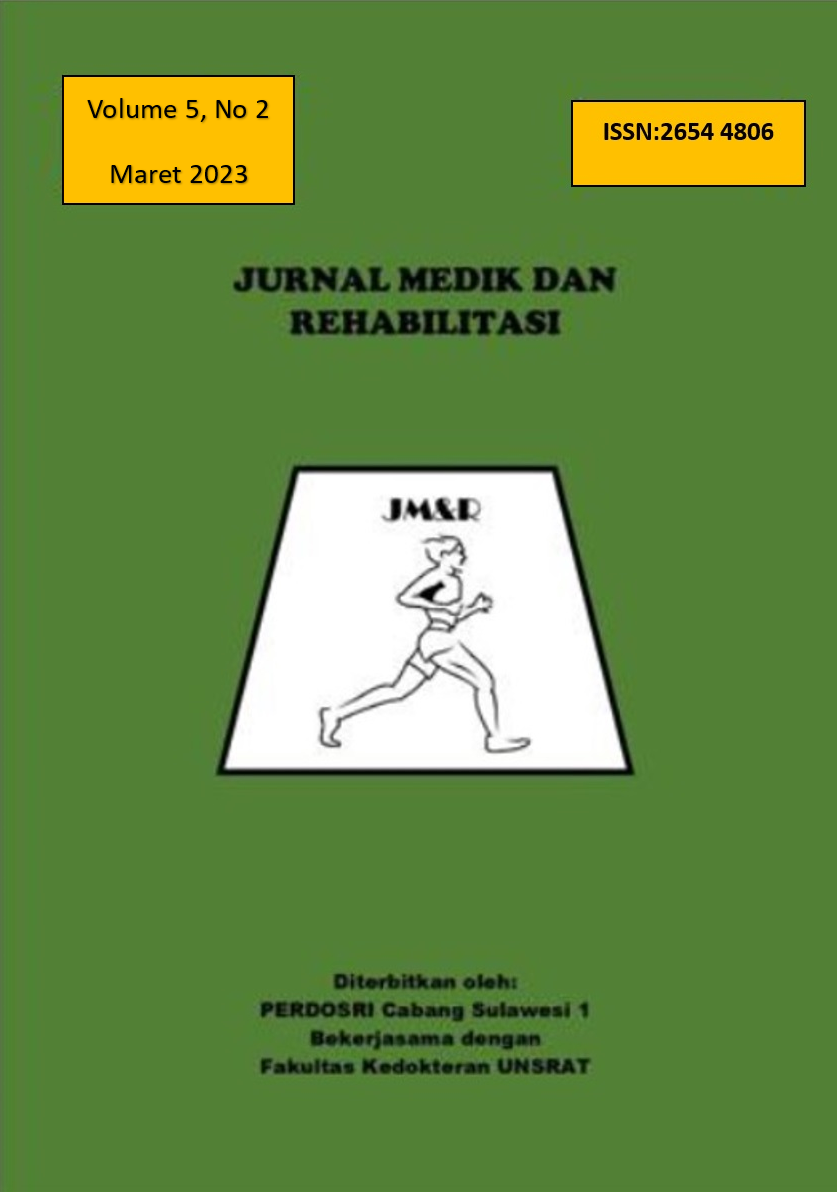PHYSICAL MEDICINE AND REHABILITATION MANAGEMENT IN GERIATRIC PATIENT WITH POST TOTAL KNEE ARTHROPLASTY LEFT KNEE EC OSTEOARTHRITIS GRADE IV, RIGHT KNEE OSTEOARTHRITIS, IMMOBILITY, INSTABILITY, RISK OF FALL, SUSPECT LOW CARDIORESPIRATORY ENDURANCE, FRAILTY
Abstract
Elderly is the last period or closing period in a person's life span and when a person has entered the age of 60 years. Elderly is characterized by certain physical and psychological changes. Geriatrics is defined as a branch of medical science with a focus on premature aging and the management of diseases related to elderly including promotion, prevention, diagnosis, treatment, and rehabilitation Knee osteoarthritis is a chronic and multifactorial disease characterized by cartilaginous tissue degeneration, stiffness, and painful symptoms, which in advanced stages can potentially result in physical impairment. Symptomatic knee osteoarthritis occurs in 10% men and 13% in women aged 60 years or older. The number of people affected with symptomatic osteoarthritis is likely to increase due to the aging of the population and the obesity epidemic. Cui et al in their research in 2020 found that there are around 654,1 million individuals (40 years and older) with knee osteoarthritis in 2020 worldwide. They found that the global incidence of knee osteoarthritis was 203 per 10,000 person-years in individuals aged 20 and over. Clinical symptom of knee OA are knee pain with gradual onset, worse with prolonged activity, worse with repetitive bending or stairs, worse with inactivity, worsening over time, better with rest, better with ice or anti-inflammatory medication, knee stiffness, knee swelling and decreased ambulatory capacity.6 The treatment of choice for late-stage knee OA is the total knee arthroplasty (TKA), which is considered one of the procedures with highest rates of success within Orthopedics and is usually associated with favorable outcomes. Rehabilitation after TKA focused on pain control, decrease swelling, recovery of knee range of motion, enhancement of muscle control and strength in the involved lower limb, training in gait and improvement of patients independence in daily life. TKA reliably reduces pain and improves function in patients with knee OA and 90 % of patients report reduced pain, improved functional ability and greater health related quality of life after surgery. Moreover, 85 % of patients who undergo TKA report being satisfied with the outcome. Despite on-going advances in primary TKA patient selection, in implant design and surgical techniques, the dissatisfaction rate following TKA ranges from 5.5 % to 19 % with patients citing either a lack of pain relief or functional improvement.

